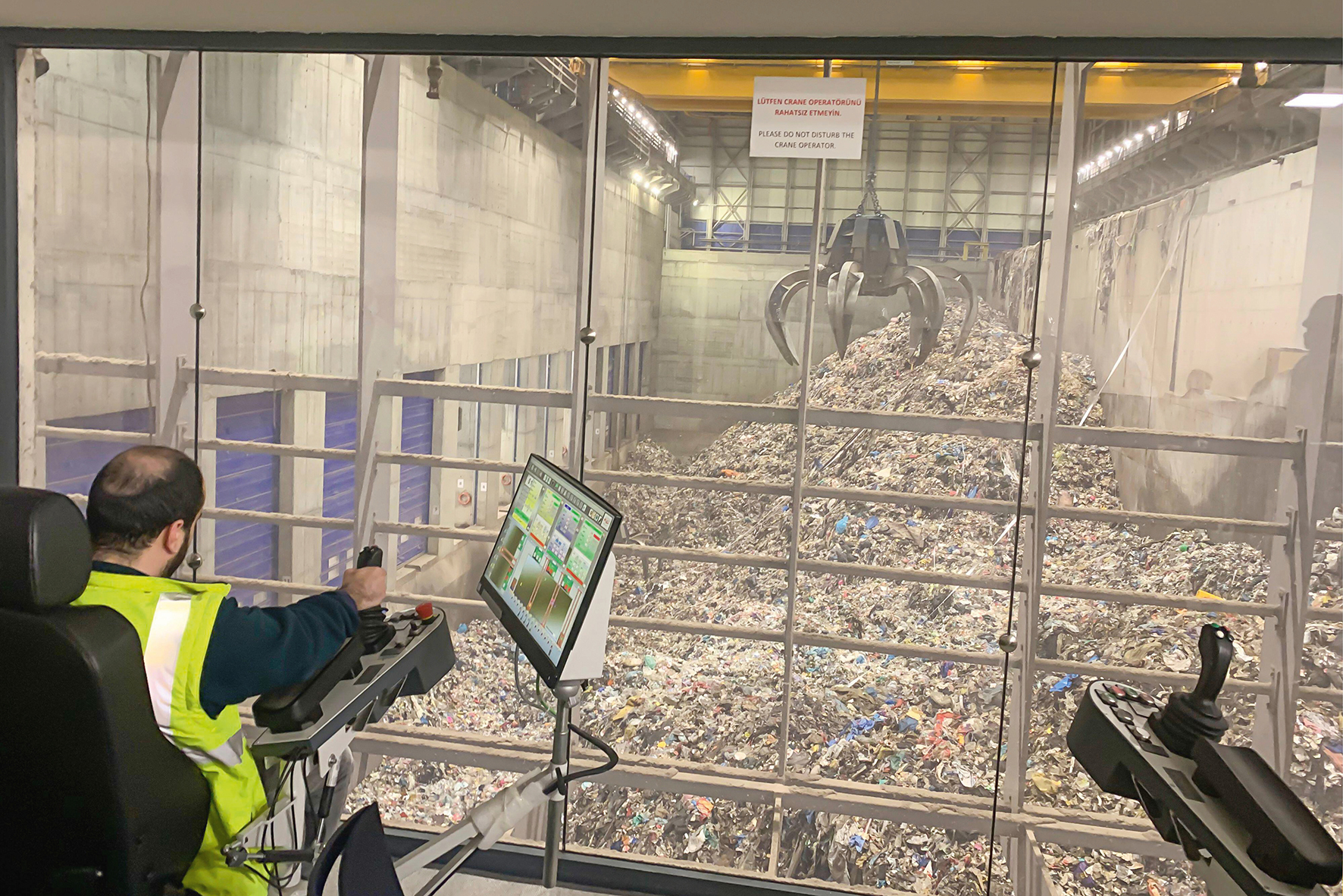Lorem ipsum dolor sit amet, consectetur adipiscing elit. Curabitur eleifend tortor nec augue pretium


Burning household rubbish in giant incinerators to make electricity is now “the dirtiest way the UK generates power”, according to analysis by the BBC’s science and climate team in October 2024.
Nearly half the household waste produced in homes – including increasing amounts of plastic – is now being incinerated, they said. Some of the experts they spoke to called for a ban on new incinerators.
“We’ve got too many [incinerators], and we shouldn’t have any more… they begin to distort our ability to recycle,” Lord Deben, former Conservative environment minister who introduced the landfill tax in 1996 and former chair of the Climate Change Committee, told the BBC.
Ian Williams, professor of applied environmental science at the University of Southampton, referred to the building of more energy-from-waste (EfW) plants as an “insane situation” in the context of targets to reduce greenhouse gas emissions (and that was before the UK government committed to a new 81% reduction in emissions by 2035).
The BBC’s analysis used five years of emissions data for EfW plants in the UK and showed they were producing on average almost as many greenhouse gases (720gCO2e/kWh) as the global averages for coal plants (730gCO2e/kWh). Gas comes in at 400gCO2e/kWh, nuclear 12gCO2e/kWh, wind 11gCO2e/kWh and solar 40gCO2e/kWh.
In September 2024, the UK closed its last coal-fired power plant as a step towards cleaner power. So, the BBC article argues, why isn’t there the same approach for EfW, given its emissions?
This is the question vexing campaigners and policymakers. For more than 20 years there has been a long-standing programme of concern about removing waste from landfill – which sits at the bottom of the waste hierarchy as the least environmentally sound option. EfW – a rung up the hierarchy – was seen as the solution for most of that previously buried waste, with some more going into recycling, which is another step higher. “Investment in EfW is a great success story for the UK in the past 15 years,” says Jacob Hayler, executive director at the Environmental Services Association (ESA).
A welcoming, lively marketplace (think landfill tax and fiscal incentives to create ‘clean’ energy) was created to build the EfW infrastructure, reduce reliance on landfill and help ‘transition’ to a more circular approach with more recycling, reuse and reduction of waste. That hasn’t happened, though, prompting Wales and Scotland to introduce moratoria on new EfW plants as concerns mounted that there was overcapacity and that to remain viable the plants would continue to take recyclable waste.
Whether or not that is the case remains a very hot potato. Waste companies have argued that they simply responded to the policies put in place, and this is actually a positive environmental story. (They also say they are not worried about capacity as there is plenty of commercial waste too).

The ESA points to a 200kgCO2e saving for every tonne of waste burned rather than buried (from a 2021 study), and in December published a report that found EfW plants fitted with carbon capture and storage (CCS) technology offer “the most reliable and lowest-carbon solution for treating residual waste in future”.
The price tag is high, though. Decarbonising EfW is “one of the trickiest parts” in the ESA’s strategy to reach net zero, Hayler says. CCS as well as heat capture will play a part; and the sector certainly doesn’t want to be burning as much plastic as it is currently.
Indeed, the make-up of the waste that companies deal with at the front end of their plants makes comparisons with sectors like coal “misleading”, according to the National Association of Waste Disposal Officers, with feedstock often a mix of materials that can be “heavily contaminated”.
The composition of the waste fed into the plant is “the parameter that can most affect the climate and environmental performance of [waste-to-energy, or] WtE (with and without carbon capture),” noted academics from University College London in ‘Decarbonising waste-to-energy: A life cycle assessment study’ for the journal Resources, Conservation & Recycling.
Using data from Veolia UK, the team concluded that reducing the plastic component via enhanced separation could be an effective solution, “because it increases the biogenic fraction and amount of ashes (although lowering the calorific content) leading to lower climate change impacts […] as well as net carbon emissions”.
Their life cycle assessment also showed that “despite associated energy penalties, carbon capture significantly lowers climate change impacts”.
This nuance didn’t reach the BBC story. “Energy-from-waste is at the dirtiest end of the spectrum but equally it’s a necessary part of a [waste management] portfolio right now,” says Suez UK chief sustainability and external affairs officer Adam Read. “It’s easy to paint us as […] the evil corporation when in reality what would you do if we weren’t there?”
It is a fair point. The country’s relationship with landfill is ending and yet recycling rates have languished at around 45% for years (it is notably higher in Wales). Policies to shift this, including extended producer responsibility for packaging, deposit return schemes and simplified household collections, have all been delayed, so the waste industry has still had to deal with the same amount of residual waste. “The need to treat residual waste is a symptom of stagnant recycling performance, not the cause of it,” said the ESA recently.
Whether the new government can succeed where previous ones have failed is moot. The early signs are promising. Read spoke to Transform after hosting Mary Creagh, the new circular economy minister, at one of Suez’s EfW plants. She is gathering information to work up a new circular economy strategy for England.
For 15 years, ministers have picked around the edges, but there has been no lasting commitment to “doing the hard yards”, as CEO at IOM3 Colin Church puts it, either because of a lack of resources (money) or a lack of political will – or both. “One of the reasons energy-from-waste works as a solution is because it’s ‘chunky’,” adds Church, who has led two reports into the future of EfW for the Scottish government.
Indeed, it costs millions for a plant but mobilisation of capital is fairly straightforward as contracts with local authorities to take their waste are locked in for two decades or more. But how do you mobilise capital to encourage people to separate more of their paper, glass, plastic, metals and food waste? With this in mind “you can see why, without necessarily meaning to, the whole system pointed towards energy-from-waste and not growth in other areas,” says Church.
Will new policies designed to push up recycling rates change the game? Yes and no, says Church, but let’s not let the best be the enemy of the good, he adds.
Defra says packaging reforms will collectively support 21,000 jobs, stimulate more than £10bn in investment in recycling capability in the next decade, and drive £1bn worth of investment opportunities in plastics infrastructure. However, businesses will need more than facts before the funds begin to flow again.
“Waste policy is broken,” wrote Anthesis associate director Michael Lenaghan on social media, citing two stories about Viridor. The waste processing company said it was closing its plastics recycling plant owing to “increasingly challenging market conditions and the absence of planned legislation to increase rates of plastic recycling in the UK, [and because] recycling rates are below where they were projected to be in 2020”. A day later it was reported that the company was about to secure finance for a massive EfW plant.
“The economics speak for themselves,” said Lenaghan. “Waste policy supports burning waste far more effectively than it does recycling it. You can’t blame companies like Viridor for following the money, but you can blame governments for pointing in the wrong direction.”
Time will tell if this new government can turn us away from the waste burn policies of the past. “We shouldn’t be landfilling biodegradable waste and we shouldn’t be burning plastics,” says Kim Pratt, circular economy campaigner at Friends of the Earth Scotland. “That should be the starting point for everyone.”
DAVID BURROWS is a freelance writer and researcher